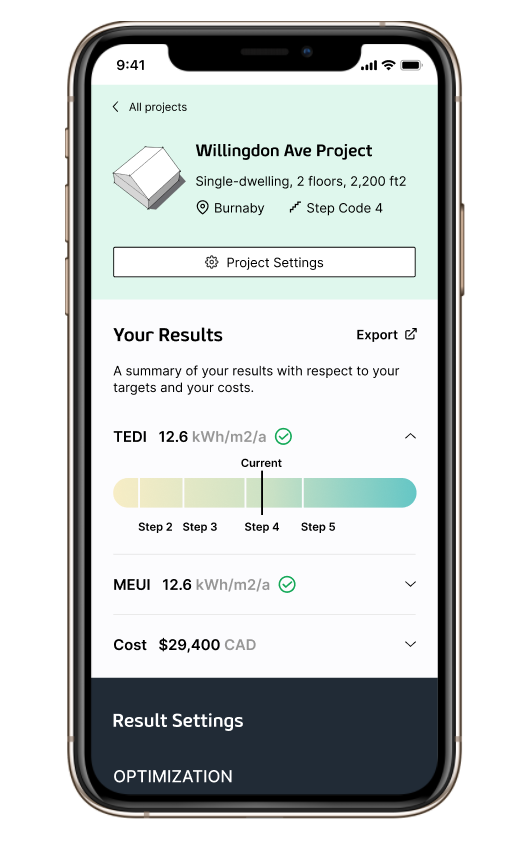OPEN Letters: Technologies at Work
If you are reading this, chances are that your work is related to the built environment in some way, as a builder, designer, property manager, energy efficiency advisor, policy maker, or advocate. And if you’re not terribly familiar with this young company called “OPEN Technologies” (ie. us), then you may find yourself wondering … “okay, which technologies?” Do we mean HVAC technologies such as heat pumps? Construction technologies such as mass timber or prefabrication? And we won`t get you started on our use of the term developer for folks who write code rather than develop land! (That said, you’ll be happy to know that—unlike many software companies—we do avoid using the terms “software architect” and “software engineer” when we create our job titles since these terms are protected by their respective industry associations.)
In this OPEN Letter, we explain why we believe that software technology has played—and will continue to play—a pivotal role in creating a low carbon future in our built environment.

The OPEN Technologies vision began with discussions amongst building industry practitioners who believed that software and data tools could play a much larger role in accelerating our progress to a low carbon future. Our central exploration was: how might we get actionable information into the right hands at the right time? Our contributions in response to this question now include:
- aggregating the building attributes and energy performance of thousands of buildings to give policy makers a richer sense of the energy and carbon footprint of their building stock as they design policy and incentives for energy efficiency; see our GRID platform and its application in Building Benchmark BC as an example;
- using data analytics and visualization tools to help users better understand the (often very positive) impact of different urban design options on urban heat island effect [Smart Surfaces], or the market shifts for green building products in response to regulatory innovation [Shift]
- democratizing modelling capabilities and allowing energy models to be used earlier in a design process by more people, shortening the feedback cycles to allow designers to quickly and cheaply define the greenest, most cost effective options); see Net-Zero Navigator, described in more detail below.
In short, software and data technologies can help a range of users – from policy makers to designers to property owners to industry participants – identify the most energy efficient solutions for their new building project or their performance tracking or retrofit of existing homes and buildings.
Any Device Will Do
Since OPEN Technologies was founded, the tools we’ve brought to life have allowed complex modelling to be conducted by non-professionals in ways that were not previously possible. Take Net-Zero Navigator for example, which we are building in partnership with the Energy Systems and Sustainable Cities research team at the University of Victoria. This tool allows architects and engineers to undertake parametric studies on new Part 3 building projects (ie. large buildings for those following along at home), available in a matter of minutes. Users can select from a variety of typical building templates and climate zones to explore design solutions and easily optimize the results for lowest energy use, thermal energy demand intensity, greenhouse gas emissions, construction cost, operational cost, lifecycle cost, or combinations of these and other factors. Searching for the design configuration that will reach a defined level of energy performance (eg. BC Energy Step Code Level 3) for the lowest first cost? Net-Zero Navigator will direct you toward that solution. Looking for the best ratio of lifecycle cost to greenhouse gas impact? You can identify design solutions to achieve this instead.

Traditionally, this type of energy modelling would take weeks, require huge amounts of data and computing capacity, and produce very few models. As a result, this status quo approach also limits the variety of design prescriptions that can be assessed, and hence dramatically reduces the project owner’s ability to experiment with the design prescriptions that best balance their energy performance, greenhouse gas emissions, and cost requirements. Net-Zero Navigator, on the other hand, lets the user assess literally thousands of design scenarios, early in the planning stage.
OPEN’s approach, with Net-Zero Navigator and other work, is to deliver the tool to users as a Web application. This means the tool is provided to the user through a Web browser on a laptop or smartphone. Net-Zero Navigator uses the University of Victoria´s huge computing capacity to create surrogate models that can be accessed from any device, providing rigorous analysis. The heavy lifting is done prior (using surrogates) and remotely (using a server). So when a user opens Net-Zero Navigator, the required data is provided by a server, a piece of computer hardware that is located and managed elsewhere. Modelling energy this way is powerful for urban practitioners because of the accessibility of Web-based content. Because Web applications are delivered through remote servers, they can access large amounts of data, conduct complex calculations quickly, and avoid encumbering the user’s device. Behind the scenes, we make this possible by writing code that runs on the remote server and in the user’s browser (technically, we write in Clojure on the server and ClojureScript in the browser; contact us if you’d like to know more about that… seriously, we’ll clear our schedule).
In sum, our goal at OPEN is to use software and data technologies to help our users to quickly and easily understand the climate impacts of their decisions and steer them toward the design options, equipment purchases, and investment strategies that have the lowest climate impact. So when our team of developers talk about our technologies, hopefully this OPEN letter gives you a bit of a sense of what we’re talking about and how we can help.
Feel free to reach out with questions or to request more information about our work!
Best wishes,
Jenna McNeil and the OPEN Technologies team